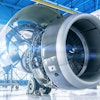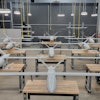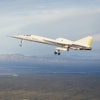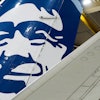 East Providence, R.I. (Manufacturing.net) — Students from the University of California, Irvine are now using DryLin T profile rail guides donated by igus to innovate within the university’s Aeroacoustic Laboratory, which attempts to study the acoustics of various aerospace technologies, such as fans, nozzles or ducts. The students are now working on their Geared Turbofan Project, sponsored by Boeing, which aims to study the noise attenuation effects of a hybrid wing-body in relation to the placement of an aircraft’s turbofan.
East Providence, R.I. (Manufacturing.net) — Students from the University of California, Irvine are now using DryLin T profile rail guides donated by igus to innovate within the university’s Aeroacoustic Laboratory, which attempts to study the acoustics of various aerospace technologies, such as fans, nozzles or ducts. The students are now working on their Geared Turbofan Project, sponsored by Boeing, which aims to study the noise attenuation effects of a hybrid wing-body in relation to the placement of an aircraft’s turbofan.
The experiment aims to test the viability of a hybrid wind-body design, which features a fuselage that blends directly into the wings, which means that the airfoil-shaped body assumes most of the lift, equating to a need for smaller wings. The laboratory is testing the design’s attenuation in downward noise — essentially, the configuration of engines above the fuselage could make aircraft flying overhead quieter for people on the ground.
This noise shield is being tested on a small-scale model of the geared turbofan engine, with a nacelle and fants made using stereolithography 3D printing. The shield has been mounted using the DryLin T profile rail guides, which help the students study the noise attenuation effects relative to the backend of the shield.
Tae Kim, a member of the UCI Aeroacoustic Laboratory team, said: “The DryLin T rails and carriages withstand the torque of the heavy shield. If a simple bar of metal had been used, the shield would have needed to be detached from the bar and then reattached at a different location with screws and nuts. The DryLin rail and carriages allows for easy movement of the shield, which eliminates the risk of screws falling. [It also] allows the shield to move at very small increments, which expands the scope of the study. The pre-drilled holes on the rails made it easy to mount and the machinability of the rails allowed for easy adjustments in length.”
Learn more about igus at www.igus.com.






















